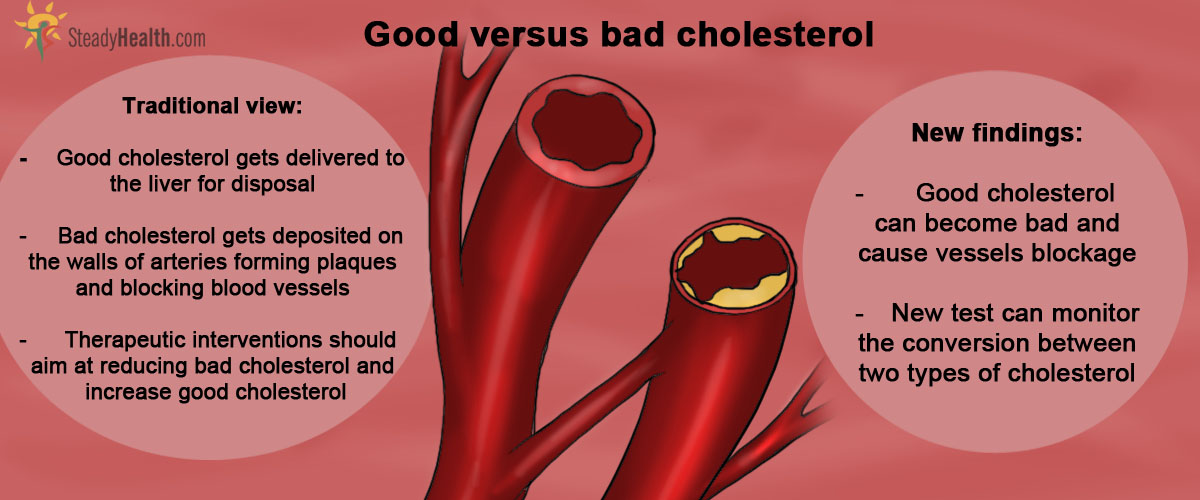We all heard about cholesterol. Most people are well aware of connection between high level of cholesterol and heart problems. Cardiovascular diseases are the single largest cause of mortality in Western world, and most of these diseases are closely connected with the dis-balance of cholesterol in the body.
Cholesterol is not necessarily bad. After all, this is one of the major components of our cell membranes. Our body simply won’t be able to function without cholesterol. Every day our body produces, on average, 1g of cholesterol to cover its needs in this biochemical compound. Problems come with the excess level of this essential biochemical in the blood.
Essentials of cholesterol metabolism
Cholesterol in our body originates from two major sources. It is produced by various organs and tissues in our body (for example, liver), and it also comes from our food. In people with healthy diet, food contributes to around 20% of all cholesterol. Obviously, unhealthy diet has a potential of increasing the cholesterol intake rather significantly. But what actually happens when the blood cholesterol rises to the dangerous levels?
Cholesterol is needed by each and every cell in the body. This means that it has to be delivered to all these cells from where it is produced or ingested. Also, the excess of cholesterol should be properly removed (this task is fulfilled by the liver as well) and disposed of. Cholesterol molecules must be able to travel around the body.
There is one problem here, however. Cholesterol is not soluble in water. If you take chemically pure solid cholesterol and try to mix it in a glass of water, it will simply precipitate to the bottom of the glass. Insolubility of cholesterol means that it is also not soluble in blood. And this creates problems with its transportation around the body.
Our body solved the problem by providing cholesterol with special carrier proteins in the blood plasma. These proteins are capable of binding cholesterol molecules on their surface and transporting them in the blood around the body. The binding is reversible, and cholesterol molecules can be released when they reach their destination.
“Good” cholesterol and “bad” cholesterol
Many of us heard of so-called good and bad cholesterol. Well, the names are slightly confusing. There is no chemical difference between these two types of cholesterol, both are exactly the same compound. The difference is in the type of carrier protein to which cholesterol is bound. Our blood contains two major type of cholesterol transporter – High Density Lipoproteins (HDL) and Low Density Lipoproteins (LDL).
See Also: The Myth Of The Cholesterol Myth
Why? Because HDL binds cholesterol quite tightly which enables it to be successfully delivered to its destination, while LDLs are not very good at keeping cholesterol molecules and tend to lose them during transportation. Once free cholesterol is released from LDL, it becomes insoluble and precipitates on the walls of blood vessels.
For some reason, the precipitation of cholesterol is particularly active on the walls of blood vessels supplying our heart. It can also be deposited on the walls of aorta and in the blood vessels of the brain. Deposits of cholesterol are known as cholesterol plaques. Over time, these plaques grow and start to block the affected blood vessels. This eventually leads to the lack of blood supply to various tissues and organs, which start to suffer from the lack of oxygen and nutrients. Ischemic heart disease, aortic aneurism, stroke and myocardial infarction are all caused by formation of cholesterol plaques. LDL-bound “bad” cholesterol is considered the major villain in their development.
There Is Much More To The Story Of Good And Bad Cholesterol
With the growing obesity epidemics in the developed world, the story of good and bad cholesterol became a focus of multiple research and health advisory articles. It is now recommended to measure both types of cholesterol in the blood of patients to estimate the risk of cardiovascular diseases more accurately.

It is widely considered that monitoring of LDL cholesterol level is of paramount priority in estimating the risk for heart. The high level of HDL is viewed as normal since this is a good cholesterol.
Some new research data, however, challenge this simple view. Researchers from the Cleveland Clinics in the US tried to boost the level of good cholesterol assuming that this will be beneficial for health. It turned out, however, that in many cases good cholesterol simply converts into another kind of abnormal cholesterol, and gets deposited on the wall of blood vessels in pretty much the same manner as the bad cholesterol does.
Modifications of good cholesterol can be detected and monitored
The good news, however, is the scientists have found out exactly what converts good cholesterol into its abnormal damaging variety. The mechanism of this transformation was investigated in details. On the basis of their findings, researchers have developed a blood test for abnormally modified good cholesterol which would help to monitor patients with high cholesterol level and provide them with therapeutic interventions if and when they are needed.
New data imply that simple idea of monitoring the bad cholesterol in patients at high risk of cardiovascular complications is simply not correct. Multiple parameters should be regularly measured, and the general level of cholesterol should be kept in check.
See Also: Are Your Cholesterol Numbers Normal?
Drugs or diet?
With various degree of success, blood cholesterol level can be controlled with the use of drugs, healthier diet and exercise.
Medications such as statins (like atorvastatin and simvastatin) are commonly prescribed, working by reducing liver-produced cholesterol. Bile-acid-binding resins, such as cholestyramine and colestipol, help intestines bind bile acids, while cholesterol absorption inhibitors like ezetimibe reduce dietary cholesterol absorption. Injectable medications, including alirocumab and evolocumab, cater to specific populations, especially those intolerant to statins.
Dietary changes play a crucial role. Reducing saturated fats from red meats and full-fat dairy, eliminating trans fats often found in margarines and processed snacks, and increasing intake of omega-3 fatty acids from sources like salmon and flaxseeds can have beneficial effects. Soluble fiber from foods like oatmeal and apples can reduce cholesterol absorption, and whey protein found in dairy aids in lowering LDL cholesterol.
Exercise is the third pillar. Engaging in at least 30 minutes of physical activity on most days can raise the good HDL cholesterol and lower the bad LDL cholesterol. Aerobic exercises such as walking and jogging, complemented by resistance training like weightlifting, offer comprehensive benefits.
It is often difficult to establish which approach would work better for a particular individual. Some people have naturally high level of cholesterol biosynthesis and would consistently demonstrate excessive blood level of cholesterol even on a diet essentially free of any cholesterol. Clearly, for this people drugs such as statins are the best method for keeping cholesterol level in check. On the other hand, significant number of obese people prefers to rely on drugs instead of making any effort to eat healthier.
- Rhodes CM Stryer L, Tasker R (1995). Biochemistry (4th ed.) San Francisco: W.H. Freeman. pp. 280, 703
- Ascherio A, Willett WC (October 1997) Health effects of trans fatty acids. Am. J. Clin. Nutr. 66 (4 Suppl): 1006S–1010S
- Castelli WP (July 1992) Concerning the possibility of a nut... Arch. Intern. Med. 152 (7): 1371–2
- Demonty I, Ras RT, van der Knaap HC, Duchateau GS, Meijer L, Zock PL, Geleijnse JM, Trautwein EA (February 2009) Continuous dose-response relationship of the LDL-cholesterol-lowering effect of phytosterol intake. J. Nutr. 139 (2): 271–84
- Ying Huang, Joseph A DiDonato, Bruce S Levison et al. (26 January 2014) An abundant dysfunctional apolipoprotein A1 in human atheroma. Nature Medicine. Early online publication.
- Mindmap by steadyhealth.com
- Photo courtesy of ThisParticularGreg by Flickr : www.flickr.com/photos/thisparticulargreg/514871141/


